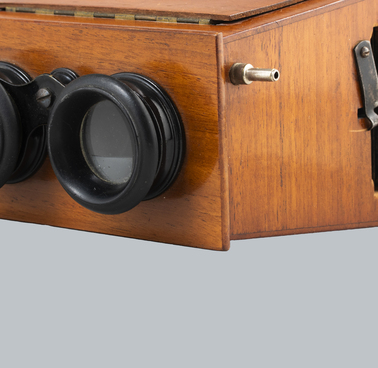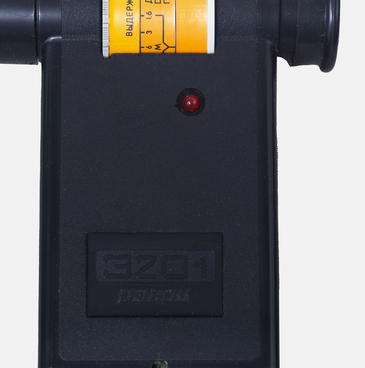Rangefinders were used to measure the distance from a camera to a photographed object when working with cameras in which the sharpness was adjusted using a distance scale.
Two models of rangefinders were produced in the USSR — Blik and Smena. The Smena rangefinder was produced in the 1950s at the LOMO plant (Leningrad Optical Mechanical Association named after Vladimir Lenin). It was designed to be used together with Smena camera models from the nonnumerical to the fourth one, also produced at the LOMO plant.
The design of the Soviet rangefinder was similar to that of foreign analogs. It was installed in the bracket for the flash unit, although it was more convenient to use the rangefinder separately from the camera. The picture in the rangefinder window was large and bright. The distance was set by a large ring, which featured a distance scale corresponding to that on the lens. The distance scale started at one meter and had no upper limit.
The front of the rangefinder featured two large rectangular windows in light-colored metal frames. At the back, there was a small round framed viewing window. At the base, there was a T-shaped foot for fixing the rangefinder in the bracket for the flash unit.
Smena rangefinders worked similarly to the built-in rangefinder in FED, Zorki and Kiev cameras: the distance was measured by superimposing two images. By turning the focusing ring with the distance scale, the photographer superimposed two images of the photographed object into one and looked at the number on the index scale. This digit showed the distance between the camera and the object, and the same number had to be set on the distance ring of the lens. For example, a superimposed image shows three meters on a rangefinder scale. This means that the distance from the camera to the object is three meters. So, the photographer should set three meters on the lens scale and then take a picture.
Even with the advent of a new generation of Smena cameras (the fifth model and so on), the rangefinder was still produced, however, it became inconvenient to use with these cameras, because it blocked access to the shutter-release button.
In 1968, a Smena rangefinder in a leather case cost
2 rubles 50 kopecks.




